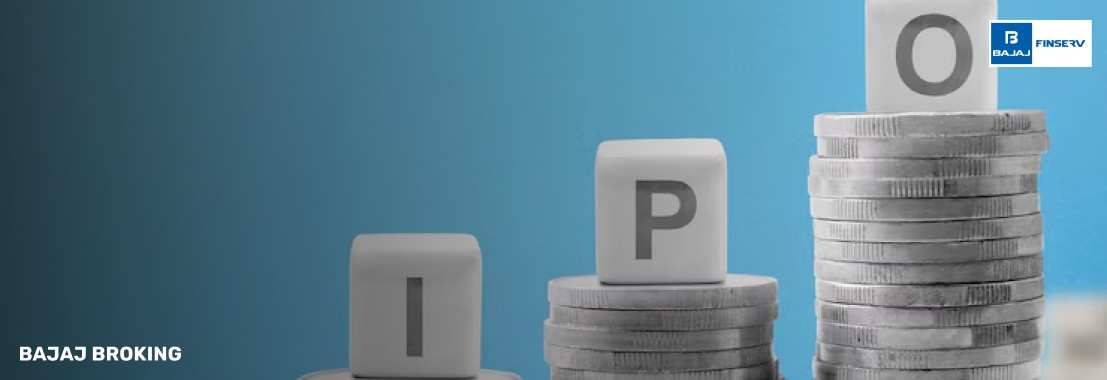If you’ve ever applied for shares in an IPO, you’ve likely noticed the public offering price (POP)—that final price at which shares are offered to the public. This isn’t just a random figure. It’s the outcome of detailed analysis, market feedback, and negotiation between the issuing company and underwriters. For you as an investor, the POP is the entry point to a company’s stock before it begins trading on the exchange. It sets the tone for demand, valuation, and post-listing performance.
In India, most IPOs come through book-building or fixed-price mechanisms, both of which involve setting a price band or a fixed rate for the issue. The POP lies at the heart of this, representing the final price determined just before allotment. It’s crucial because it reflects investor sentiment and expectations at that time. Whether you’re a seasoned investor or applying to your first IPO, understanding how the POP is calculated—and what it tells you about the company—can help you make better decisions about where to invest your capital. In this article, we’ll explain how the POP is determined, what influences it, and how it compares with market price once trading begins.
How is the Public Offering Price Determined?
The POP is carefully calculated and doesn’t come out of thin air. Underwriters, company executives, and merchant bankers work together using a structured approach to find the right balance between investor demand and company valuation.
Before you dive into the IPO, knowing how the POP is set gives you a better grip on whether the price is fair and sustainable post-listing.
Appointing Merchant Bankers and Underwriters
The issuer first engages SEBI-registered merchant bankers who take on the role of underwriters. These professionals help with pricing strategy, investor roadshows, and regulatory filings.
Conducting Company Valuation
A thorough valuation is conducted using methods like DCF, peer comparison, and earnings multiples. The company’s financials, industry position, and future outlook are factored in.
Deciding on Pricing Method
The issuer chooses between a book-built issue (where a price band is set) or a fixed-price issue (a single price). Most large IPOs in India use the book-building route.
Organising Investor Roadshows
Before setting the final price, the issuer and underwriters present the company’s case to institutional and high-net-worth investors. These roadshows generate interest and feedback.
Analysing Investor Demand
During the book-building process, bids are collected from various investor categories. The POP is decided based on bid data, oversubscription levels, and market sentiment.
Finalising the POP
The company and underwriters settle on the final price—usually the upper end of the price band if demand is strong—and announce it just before share allotment.
Factors influencing the public offering price
Several factors come together to influence the final POP in any IPO. These are assessed with the aim of balancing investor appetite and fair valuation for the company.
Before applying to an IPO, it’s helpful to know what goes into pricing. These factors tell you whether the POP is justified—or stretched.
Company Financials and Growth Prospects
Revenue, profit margins, and scalability shape how investors perceive value. Companies with strong financial performance tend to command higher POPs.
Market Conditions and Investor Sentiment
Bullish markets or positive macro trends often allow higher pricing. In bearish or volatile periods, the POP may be conservatively set to ensure participation.
Peer Comparison and Sector Performance
Analysts compare the company’s valuation with similar listed firms. A POP aligned with sector averages is generally seen as balanced by investors like you.
Brand Recognition and Business Model
A well-known brand or disruptive business model can justify a premium. For example, consumer-facing tech companies may price higher based on visibility and growth story.
Anchor Investor Participation
Strong interest from anchor investors often leads to pricing confidence. If they come in at the top of the price band, it may influence the final POP.
POP vs Market Price: Understanding the Difference
Understanding the difference between the public offering price (POP) and the market price helps you set realistic expectations on listing day. While the POP is what you pay during the IPO, the market price is what the share trades at once it’s listed.
Criteria
| Public Offering Price (POP)
| Market Price
|
Definition
| The price at which IPO shares are offered to investors
| The price at which shares trade on stock exchanges post-listing
|
Decided by
| Issuer and underwriters based on demand and valuation
| Determined by market forces—supply, demand, and sentiment
|
Timing
| Finalised before IPO share allotment
| Begins fluctuating from the moment shares are listed
|
Visibility
| Known only before allotment
| Publicly visible in real-time once listed
|
Stability
| Fixed and doesn’t change post-announcement
| Volatile and may rise or fall depending on investor behaviour
|
Influence of demand
| Reflected in the number of bids received during book-building
| Reflected in trading volume and price movements after listing
|
Risk factor
| Minimal until listing day
| High—prices can move sharply based on sentiment or news
|
Investor takeaway
| Indicates company’s perceived valuation
| Indicates market’s actual assessment and ongoing valuation
|
Example scenario
| IPO priced at Rs. 500 per share
| Opens at Rs. 560 or drops to Rs. 450 depending on market response
|
Knowing how POP compares with the market price helps you plan better—whether to hold for the long run or exit on listing day.
Significance of POP for Investors
The public offering price serves as your point of entry into a newly listed company. It defines not just how much you’ll invest, but also what your short-term and long-term expectations should be. When the POP is set too high, your chances of immediate gains may be limited. If priced conservatively, listing gains might be more likely.
For Indian investors like you, POP also plays a psychological role. A lower-than-expected POP might suggest a cautious approach by the company, while a high POP can imply strong demand or optimistic projections. It’s worth remembering that the POP reflects the company's valuation at the time of issue—not necessarily its long-term worth.
Understanding POP also helps you make better comparisons between different IPOs. By looking at pricing strategies, past performance, and market response, you’ll be better placed to judge whether an IPO fits your investment goals or risk tolerance. In short, POP is not just a number—it’s your first lens into the company’s valuation story.
Real-World Examples of POP in Recent IPOs
Looking at real IPOs can help you understand how POP plays out in actual market scenarios. One such case was the LIC IPO in 2022. The issue was priced at Rs. 949 per share. Despite strong media coverage and wide investor participation, the stock listed at a discount, opening at Rs. 872 on listing day.
Another example is Nykaa (FSN E-Commerce Ventures), which went public in 2021. The company priced its IPO at Rs. 1,125 per share. Thanks to strong institutional interest and retail buzz, Nykaa listed at a significant premium, with the stock opening at Rs. 2,018—nearly 80% above the POP.
Zomato also offers a case worth noting. Its IPO was priced at Rs. 76 and opened at Rs. 116, benefiting from investor appetite for consumer tech. However, its post-listing performance showed how market price can move away from POP as investor sentiment evolves.
These examples highlight that the POP is just the starting point. The listing day performance and long-term returns depend on broader market conditions, investor expectations, and company fundamentals. Keeping track of these patterns helps you evaluate new IPOs more effectively.
Regulatory Framework Governing POP in India
In India, the public offering price is governed by strict regulations issued by the Securities and Exchange Board of India (SEBI). SEBI ensures that the POP is set through a transparent and fair process, especially in book-built issues. Issuers must file a Draft Red Herring Prospectus (DRHP), disclosing financials, risk factors, and the intended use of funds. This document must also detail the price band or fixed price.
Merchant bankers and underwriters are responsible for conducting due diligence and ensuring that the POP is based on market demand and realistic valuations. In book-building issues, SEBI mandates that at least 75% of the issue be allocated to Qualified Institutional Buyers (QIBs), whose bidding behaviour helps determine final pricing.
Any deviation or manipulation in POP setting is subject to regulatory scrutiny. Post-issue, SEBI also monitors listing behaviour to spot price manipulation or insider activity. As an investor, these regulations offer you a layer of protection by ensuring that IPO pricing isn’t arbitrary or misleading.
Conclusion
The public offering price isn’t just a number on an IPO form—it’s your first encounter with a company’s valuation and its public journey. For Indian investors, understanding how the POP is determined, what influences it, and how it relates to the market price can make all the difference between an informed decision and a risky guess. The more clarity you have on this front, the better positioned you are to make decisions that match your goals—whether it’s for quick listing gains or long-term growth.





